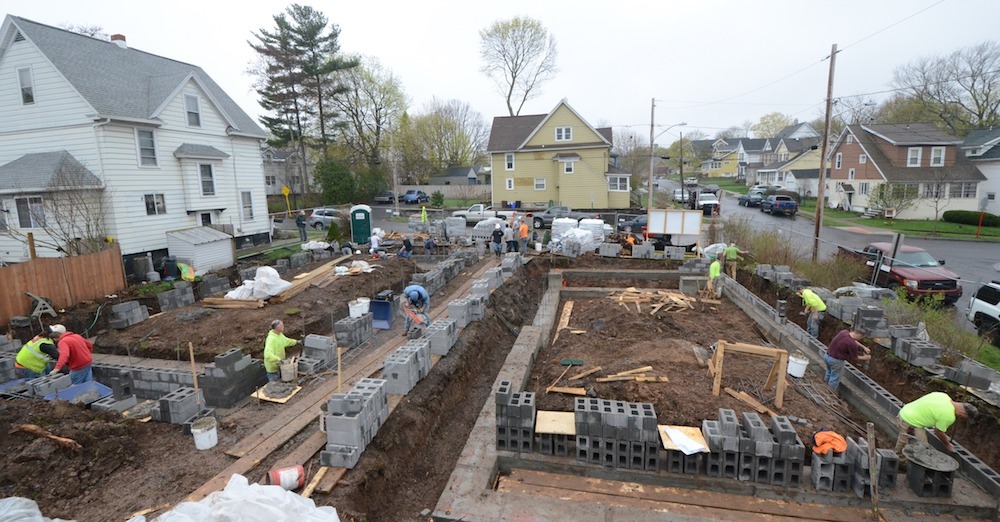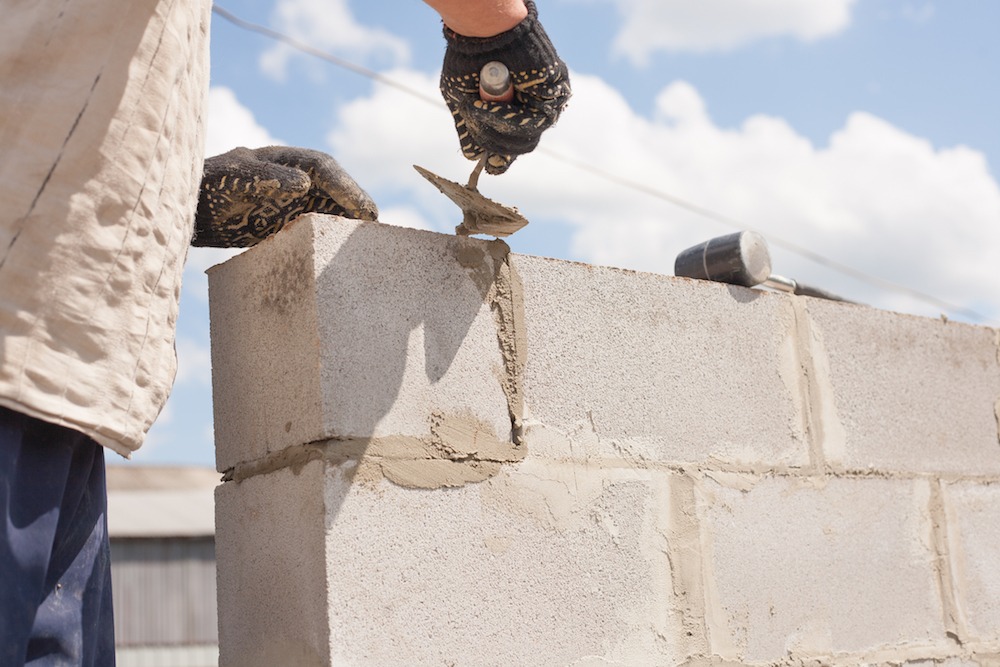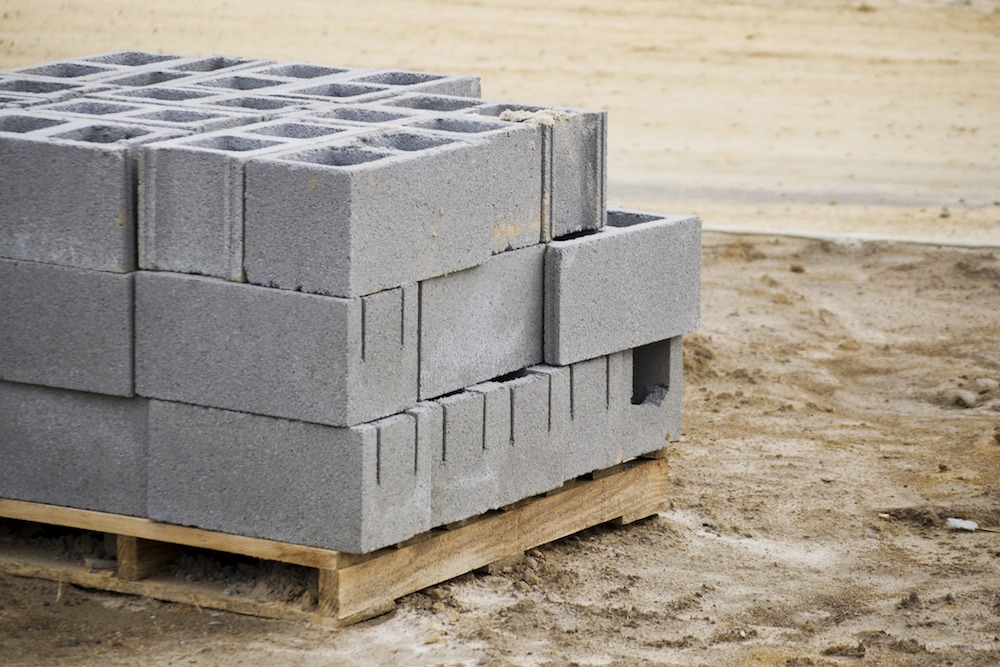The MCAA Chapter in Upstate New York has teamed up with Syracuse Habitat for Humanity and Aptum Architecture of Syracuse University School of Architecture, with the task of building two new test model homes for the development of Habitat Houses in Syracuse, New York. “The key component of the collaboration is the construction of the masonry for the houses by the MCAA as an education opportunity for their apprentices,” Sarah Barnard, Construction Systems Specialist for Syracuse Habitat for Humanity and Project Manager confirms.
The intention of the MCAA and Habitat for Humanity is for masons in training to learn the trade while teaching volunteers how to build habitat houses in CMU. While simultaneously expanding the knowledge locally, in the attempts of increasing the comfort level of designing and building homes in CMU. This project is establishing a stronger and more sustainable community through the help of volunteers and trades, and professionals.
The houses are going to be highly insulated with concrete block interior and exterior walls and wood roof construction. Energy cost will be minimal through the installation of high efficiency radiant floor heat, the high insulation and thermal mass storage capacity of block construction. Suzanne Williams, the CEO and Executive Director of the Syracuse Habitat for Humanity, made it very clear that low income people can’t afford to buy anything cheap. The goal of Aptum was to design a house with high quality yet still affordable.
Aptum was directed by the City of Syracuse to design two houses to fit into the 603 Hixson site, which was originally a one-house lot. The zoning administrator insisted on higher density, this is more in style of European housing. Creating slender and taller homes, thus making them denser for walkability. Two driveways are required by code, however, since the homes would be so close together, Aptum proposed one driveway instead. The city then realized that it would work and still be an appropriate scale and density they were looking for, according to Julie Larsen, Partner, Aptum Architecture.
“As architects, we never design houses we wouldn’t want to live in ourselves. And that higher quality starts with a local willpower to bring global knowledge to the community,” Larsen expresses. Aptum maintains that higher quality starts with a local willpower to bring global knowledge to the community. Striving to incorporate European-style design and construction into of the Habitat houses while including quality as a key component.
The designs for the houses aimed to achieve the two main objectives of Habitat for Humanity: provide the highest quality standards for affordable houses and use local knowledge and financial support to get them built. To accomplish these objectives, decisions were made on materials to use that are low maintenance and have a long shelf life.
CMU was chosen to be used as the load-bearing structure of the houses, which will accommodate all of Habitat’s needs and provide comfort in all seasons donor and member of MCAA adds. Highly insulated and durable concrete is being used for the walls, polished concrete floors, easily repaired façade system and windows that can be replaced with ease if damaged are being used. In addition to using highly insulated roofs with dormers that release warm air in the summer and warm up the houses in the winter.
The Upstate New York MCAA chapter is donating the labor and materials to build the houses. The houses are still underway, so we’ll be sure to keep you updated on this story.
Editor’s note: Masonry is a trade that not only creates amazing and everlasting structures, but those in the industry tend to display an overall concern and desire to help those around them. In our Masonry Gives Back series we are going to highlight some of the good work those in our industry provide to their respective communities. If you know anyone who is doing good work through masonry, please email them to us at dkamys@staging1.masonrymagazine.com. We’d love to feature as much of the good work going on as possible.


